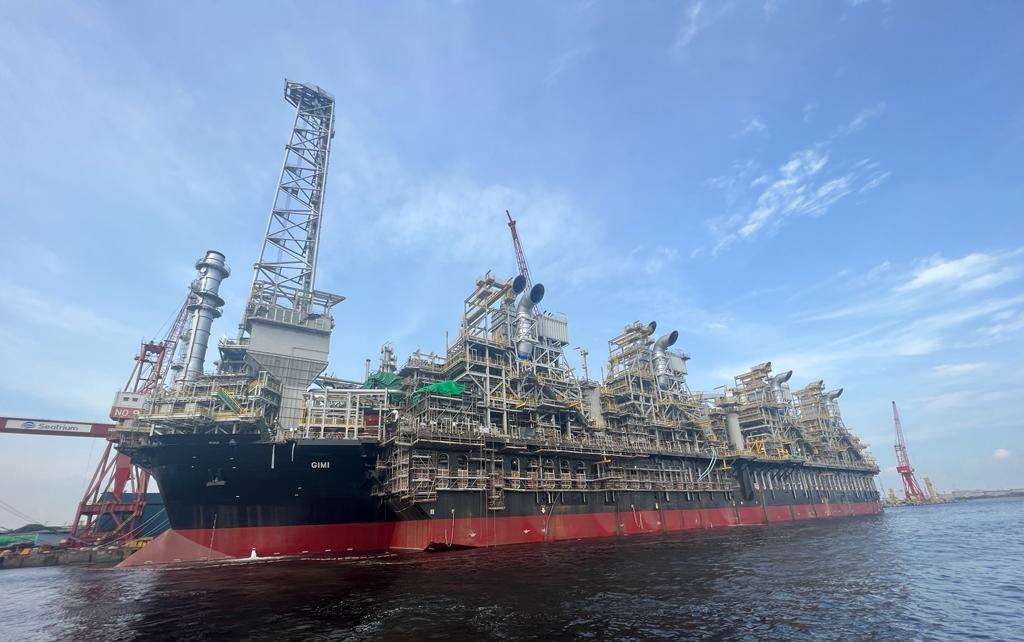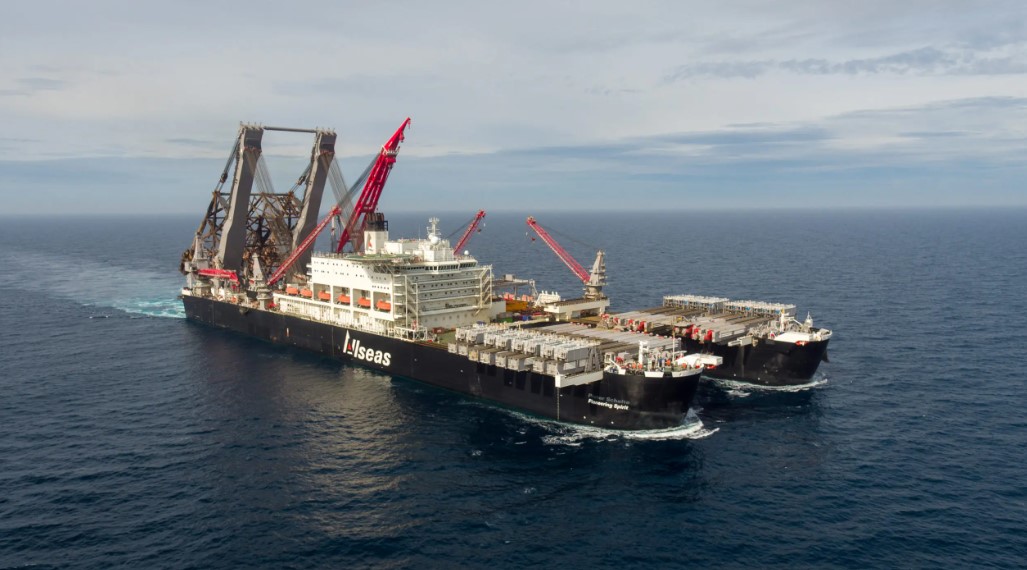UK-based energy giant BP has selected Swiss-based offshore contractor Allseas to complete the subsea pipelay scope for the Greater Tortue Ahmeyim FLNG project located offshore Mauritania and Senegal.
Allseas said in a statement it will undertake GTA offshore pipelay works early December using what it says is the world’s largest construction vessel, Pioneering Spirit.
Moreover, installation support will be provided by Allseas’ offshore construction support vessel Oceanic.
Allseas said the contract covers the installation of about 75 kilometers outstanding on the two 16-inch export pipelines with field termination assemblies (FTAs) in water depths between 1,500 and 2,800 meters, and four 10-inch CRA infield lines with FTAs up to two kilometers long in 2,800 meters of water.
The contractor did not provide the price tag of the deal.
According to the statement, BP and Allseas commercial and engineering teams “worked tirelessly” to evaluate the technical feasibility of installing the pipelines and subsea structures, which were originally designed for installation with a J-lay solution.
The installation of mixed-diameter pipelines and subsea structures in ultra-deepwater is the “perfect fit” for Allseas’ S-lay vessel Pioneering Spirit, which boasts a record-breaking 2,000-tonne tension holding capacity, it said.
Also, to install the 10 FTAs, the vessel will be fitted with a special 1,000-tonne J-mode installation frame, designed in-house and built at Allseas’ Heijningen fabrication yard in the Netherlands, the firm added.
McDermott
Back in 2019, Houston-based McDermott and Baker Hughes won contracts from BP for subsea umbilicals, risers, and flowlines, and subsea production system equipment for the GTA project.
McDermott said at the time it will use its Amazon pipelaying vessel and other vessels to support installation.
According to its AIS data, Amazon was on Thursday located offshore Las Palmas, Spain, after leaving Nouakchott, Mauritania last month.
Media reports suggest that McDermott stopped GTA pipelay work due to a payment dispute with BP.
Project partner Kosmos Energy said in August that BP targets first gas in the first quarter of 2024. It attributed this due to a delay in completion of the subsea work scope.
“Due to a delay in the subsea workstream, the operator has put in place a plan to finish installation of the infield flowlines and subsea structures in the first quarter of 2024,” the company said.

Tortue FLNG and FPSO
Kosmos also said that Golar LNG’s converted floating LNG producer Gimi and the GTA FPSO were expected to arrive on the project’s site in the fourth quarter of this year.
The 2.5 mtpa Gimi FLNG will serve BP’s Greater Tortue Ahmeyim project under a 20-year deal.
Golar said in its results report that it had expected Gimi to leave the yard in September 2023.
However, the firm now expects the FLNG to leave the yard in October.
As per the project’s FPSO, it left Cosco Shipping Heavy Industry’s yard in Qidong, China in January this year.
The GTA FPSO was on Thursday being towed offshore Durban, South Africa, its AIS data shows.
Following completion of commissioning activities at the site offshore Mauritania and Senegal, the FPSO will process natural gas – removing condensate, water, and other impurities – before exporting it by pipeline to the project’s FLNG facilities, 10km offshore.
With eight processing and production modules, the FPSO will process around 500 million standard cubic feet of gas per day.
The FLNG will liquefy majority of the gas, enabling export to international markets. Some of the supplies will help meet growing demand in the two host countries, BP previously said.
Second phase
Besides the first phase, BP and its partners are also working on the second phase.
In February, BP and partners confirmed the development concept for the second phase of the GTA LNG project.
Besides Kosmos, other partners include Petrosen and SMH.
The partnership will evaluate a gravity-based structure (GBS) as the basis for the GTA Phase 2 expansion project.
BP said the project will have a total capacity of between 2.5-3 million tonnes per annum.
The concept design will also include new wells and subsea equipment, integrating with and expanding on existing GTA infrastructure.

